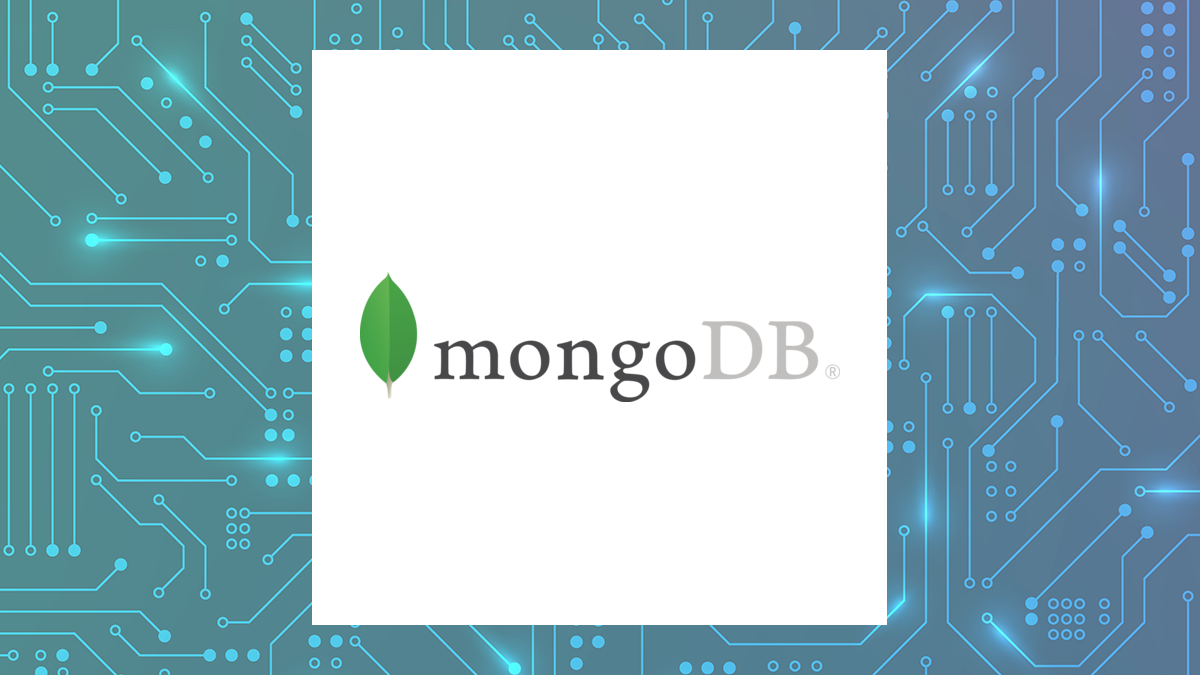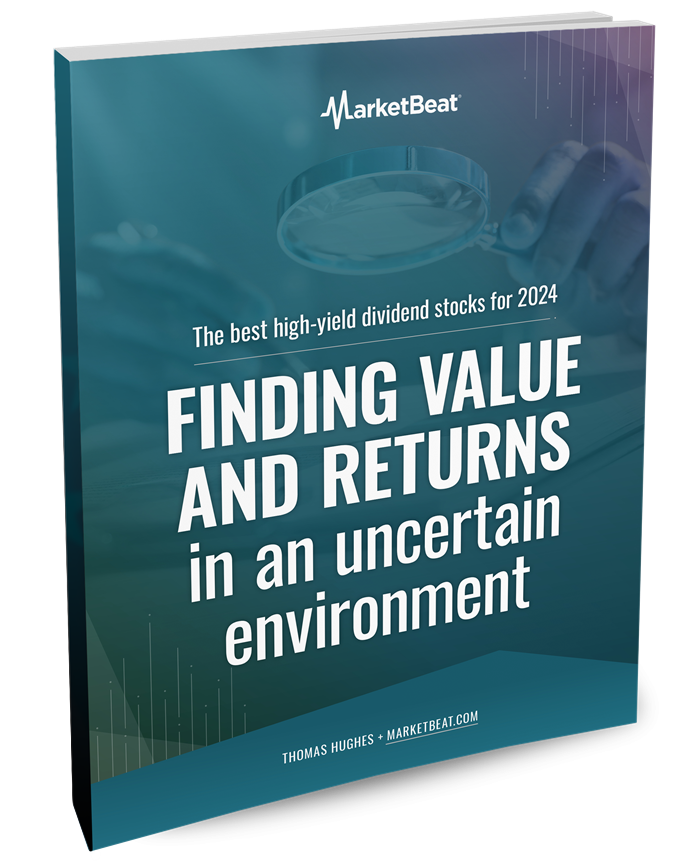Month: May 2024

MMS • Bruno Couriol

The Green Web Foundation published a new release of CO2.js, a JavaScript library that enables developers to access the Green Web API and estimate the carbon emissions associated with their apps, websites, and software. CO2.js supports developers who want to create a carbon budget for their site or include carbon footprint estimation in monitoring tools.
By some measures, internet use accounts for 3.7% of global greenhouse gas emissions, which makes it comparable to emissions associated with the entire world air traffic.
The Green Web Foundation explains:
Our mission at The Green Web Foundation is for a fossil-free internet by the year 2030. We know that getting there will take a collective effort on the part of technologists around the globe. That’s why we’re always looking for ways to leverage open source and open data. Our aim is to equip those in tech jobs with compelling, state-of-the-art, practical, and well-documented tools and “patterns” for change. Tools and patterns that can be used right now in workflows and products.
CO2.js is just one of the tools we’ve created to help with this.
CO2.js takes an input of data, in bytes, and returns an estimate of the carbon emissions produced to move that data over the internet. It can be run in the browser, on Node.js servers and some serverless and edge compute runtimes.
Developers can incorporate the carbon emission estimate in their workflow and set a carbon budget in the same way that they already set code coverage targets or performance budgets. If a website or an application goes over budget, an alert could be raised or the deployment could be blocked.
To estimate carbon emissions related to bytes of data, developers can choose between the OneByte model and the Sustainable Web Design model — a richer model that factors in the device type, network type, and CPU utilization:
import { co2 } from "@tgwf/co2";
const swd = new co2();
const declaredSwd = new co2({ model: "swd" });
CO2.js also has a perVisit() function to calculate the carbon emissions of a website, Additionally, developers can check whether a domain is hosted on a green host by querying the Green Web Foundation API:
const { hosting } = require("@tgwf/co2");
hosting.check(["somedomain.net", "otherdomain.com"]).then((result) => {
...
});
CO2.js is open-sourced under the Apache license. Contributors and sponsors are welcome. The Green Web Foundation is a not-for-profit organization that maintains the world’s largest open dataset of websites that run on green energy. They also offer open-source tools to manage the environmental impact of digital services.

MMS • RSS

The worldwide data management software market is massive (According to IDC, the worldwide database software market, which it refers to as the database management systems software market, was forecasted to be approximately $82 billion in 2023 growing to approximately $137 billion in 2027. This represents a 14% compound annual growth rate). At MongoDB we are transforming industries and empowering developers to build amazing apps that people use every day. We are the leading developer data platform and the first database provider to IPO in over 20 years. Join our team and be at the forefront of innovation and creativity.
The Build Team supports build systems for the entire MongoDB engineering organization. This includes implementing and maintaining our Bazel build system, for both the database server, Mongo Cloud (“Atlas”), as well as a suite of other products. These build systems handle a variety of languages (primarily C++, Java and Go), and provide not just compilation, but packaging and distribution. Most MongoDB engineers rely on these tools for their daily work. In addition to developing new build-related capabilities, the Build team provides ongoing support for our 750+ internal engineers.
We are looking for an individual who has a deep empathy for engineering teams, cares strongly about quality code, and effectively scaling development. Specifically if you are passionate about reducing build times, reducing continuous integration times, and working to improve developer satisfaction – this role is for you!
This role can be based out of our Boston office or remotely in the North American region.
The right candidate for this role will
- Have deep technical expertise in build systems including experience with C++
- Understand the whole picture of developer productivity work, including ensuring that Build team’s work drives improvements in our customers’ write-build-test loop
- Be dedicated to writing maintainable, well-tested code, with modern best practices
- Be energized by supporting customer requests, including thoughtful technical support and empowering customers to self-service their own solutions
Bonus points if the candidate has experience with:
- Administration/maintenance of a Bazel build system on a large codebase
- C++, Java, Go and/or Python
- Integrating static analysis tools (e.g.: sanitizers, graph visualization, code coverage, debuggers, profilers)
- Speeding up compile times
- Compiler internals
- Docker containers and package management
Position Expectations
- Design, develop, and test solutions to improve developer experience
- Mentor other developers
- Empathize and learn from other developers to understand their pain points
- Be willing and able to onboard successfully into unfamiliar tools and systems
- Collaborate productively with colleagues at all stages of project lifecycle (ideation, requirements gathering, design, execution, and delivery
Success Measures
- In the first month you will have made small but meaningful contributions to existing projects. You will have a high level understanding of the server and cloud team
- Within 3 months, you will have core contributions to at least one feature. You will have a good understanding of the team’s mission and goals
- In six months you will be proposing improvements for developer experience. You will be taking responsibility for upcoming projects
- In a year you will be mentoring other developers. You will be designing and leading projects
To drive the personal growth and business impact of our employees, we’re committed to developing a supportive and enriching culture for everyone. From employee affinity groups, to fertility assistance and a generous parental leave policy, we value our employees’ wellbeing and want to support them along every step of their professional and personal journeys. Learn more about what it’s like to work at MongoDB, and help us make an impact on the world!
MongoDB is committed to providing any necessary accommodations for individuals with disabilities within our application and interview process. To request an accommodation due to a disability, please inform your recruiter.
MongoDB, Inc. provides equal employment opportunities to all employees and applicants for employment and prohibits discrimination and harassment of any type and makes all hiring decisions without regard to race, color, religion, age, sex, national origin, disability status, genetics, protected veteran status, sexual orientation, gender identity or expression, or any other characteristic protected by federal, state or local laws.
MongoDB’s base salary range for this role is posted below. Compensation at the time of offer is unique to each candidate and based on a variety of factors such as skill set, experience, qualifications, and work location. Salary is one part of MongoDB’s total compensation and benefits package. Other benefits for eligible employees may include: equity, participation in the employee stock purchase program, flexible paid time off, 20 weeks fully-paid gender-neutral parental leave, fertility and adoption assistance, 401(k) plan, mental health counseling, access to transgender-inclusive health insurance coverage, and health benefits offerings. Please note, the base salary range listed below and the benefits in this paragraph are only applicable to U.S.-based candidates.
MongoDB’s base salary range for this role in the U.S. is:
$118,000—$218,000 USD
The Guardian’s Deep Dive into Qubes OS: A Secure Solution for Whistleblowing and Journalism

MMS • Aditya Kulkarni

The Guardian’s engineering team recently shared their experience with Qubes OS, a security-focused desktop operating system. The engineering team configured the Qubes workstations utilizing SaltStack, the default management engine in the Qubes OS.
Philip McMahon, Staff Software Engineer at The Guardian, detailed the engineering team’s journey navigating the steep learning curve of Qubes OS in a blog post. Qubes OS is also being adopted by the Freedom of the Press Foundation to improve its SecureDrop whistleblower platform, making it more user-friendly and secure for journalists.
Qubes OS offers an alternative to separate air-gapped machines, utilizing offline virtual machines, or “Qubes,” to handle sensitive messages. This approach allows for secure decryption and reading of downloaded messages within a familiar chat client interface on the same machine.
McMahon stated that the team’s goal with Qubes was to create an offline, Debian 11-based Virtual Machine(VM) that could be reset to a known state after each restart, removing any generated or downloaded data. This VM would have specific packages installed from both default and custom repositories, including a custom package from a private repository hosted on Amazon S3.
Additionally, they wanted to include a Nautilus extension and a configuration file containing sensitive information that couldn’t be hard-coded into the system.
Salt configuration in Qubes begins with a .top file.
# guardian.top base: dom0: - guardian-vms
The above top file instructs Salt to apply the guardian-vms state on dom0. The .sls state file contains the instructions for the previously mentioned guardian-vms state.
# guardian-vms.sls
create-guardian-template:
qvm.vm:
- name: guardian-template
- clone:
- source: debian-11
- label: black
- prefs:
- netvm: ""
create-app:
qvm.vm:
- name: app
- present:
- template: guardian-template
- label: green
- prefs:
- template: guardian-template
- netvm: ""
The state file accomplishes two key tasks: it creates a template virtual machine named guardian-template based on Debian 11, which operates offline. It also establishes an application virtual machine called guardian based on this template, functioning offline.
The template VM acts as a base for the app VM, containing all the necessary software. Each time the app VM restarts, its file system (except for the home folder) reverts to the template VM’s state, removing any malicious code and enhancing security. For a deeper dive into Template and App VMs, interested readers can check out the Qubes documentation.
Once the above offline VM app is created, it can be useful for some basic tasks. Installing software for viewing, editing, and sanitizing files can be done directly through a terminal in the template VM using APT. However, integrating this into the Salt configuration requires creating a new state file.
# install-packages.sls
install-packages:
pkg.installed:
- pkgs:
- libreoffice
- gedit
- vlc
Additionally, there is a need to update the top file to instruct Qubes to apply the install-packages state to the guardian-template VM
# guardian.top base: dom0: - guardian-vms guardian-template: - install-packages
We came across an interesting discussion on Hacker News, following the blog post by The Guardian. HN user cangeroo inquired about the acceptance of Qubes OS and airgapping in professional settings, and the use of specialized security equipment and processes. They also expressed surprise at the frequency of crypto theft and questioned the availability and adoption of airgapped solutions.
We also saw the tech community on Hacker News (HN) showing a keen interest in the latest developments of Qubes OS, initiating discussions upon the release of versions 4.2.0 and 4.2.1.
McMahon’s blog post also delves into other aspects of using Qubes OS, such as installing software not found in default repositories, avoiding network access on the template VM, utilizing disposable VMs, and customizing VMs to fit specific needs.
McMahon hopes his blog post will help others using Qubes OS and invites readers to reach out via email with any questions or feedback.
The Guardian’s Deep Dive into Qubes OS: A Secure Solution for Whistleblowing and Journalism

MMS • Aditya Kulkarni

The Guardian’s engineering team recently shared their experience with Qubes OS, a security-focused desktop operating system. The engineering team configured the Qubes workstations utilizing SaltStack, the default management engine in the Qubes OS.
Philip McMahon, Staff Software Engineer at The Guardian, detailed the engineering team’s journey navigating the steep learning curve of Qubes OS in a blog post. Qubes OS is also being adopted by the Freedom of the Press Foundation to improve its SecureDrop whistleblower platform, making it more user-friendly and secure for journalists.
Qubes OS offers an alternative to separate air-gapped machines, utilizing offline virtual machines, or “Qubes,” to handle sensitive messages. This approach allows for secure decryption and reading of downloaded messages within a familiar chat client interface on the same machine.
McMahon stated that the team’s goal with Qubes was to create an offline, Debian 11-based Virtual Machine(VM) that could be reset to a known state after each restart, removing any generated or downloaded data. This VM would have specific packages installed from both default and custom repositories, including a custom package from a private repository hosted on Amazon S3.
Additionally, they wanted to include a Nautilus extension and a configuration file containing sensitive information that couldn’t be hard-coded into the system.
Salt configuration in Qubes begins with a .top file.
# guardian.top base: dom0: - guardian-vms
The above top file instructs Salt to apply the guardian-vms state on dom0. The .sls state file contains the instructions for the previously mentioned guardian-vms state.
# guardian-vms.sls
create-guardian-template:
qvm.vm:
- name: guardian-template
- clone:
- source: debian-11
- label: black
- prefs:
- netvm: ""
create-app:
qvm.vm:
- name: app
- present:
- template: guardian-template
- label: green
- prefs:
- template: guardian-template
- netvm: ""
The state file accomplishes two key tasks: it creates a template virtual machine named guardian-template based on Debian 11, which operates offline. It also establishes an application virtual machine called guardian based on this template, functioning offline.
The template VM acts as a base for the app VM, containing all the necessary software. Each time the app VM restarts, its file system (except for the home folder) reverts to the template VM’s state, removing any malicious code and enhancing security. For a deeper dive into Template and App VMs, interested readers can check out the Qubes documentation.
Once the above offline VM app is created, it can be useful for some basic tasks. Installing software for viewing, editing, and sanitizing files can be done directly through a terminal in the template VM using APT. However, integrating this into the Salt configuration requires creating a new state file.
# install-packages.sls
install-packages:
pkg.installed:
- pkgs:
- libreoffice
- gedit
- vlc
Additionally, there is a need to update the top file to instruct Qubes to apply the install-packages state to the guardian-template VM
# guardian.top base: dom0: - guardian-vms guardian-template: - install-packages
We came across an interesting discussion on Hacker News, following the blog post by The Guardian. HN user cangeroo inquired about the acceptance of Qubes OS and airgapping in professional settings, and the use of specialized security equipment and processes. They also expressed surprise at the frequency of crypto theft and questioned the availability and adoption of airgapped solutions.
We also saw the tech community on Hacker News (HN) showing a keen interest in the latest developments of Qubes OS, initiating discussions upon the release of versions 4.2.0 and 4.2.1.
McMahon’s blog post also delves into other aspects of using Qubes OS, such as installing software not found in default repositories, avoiding network access on the template VM, utilizing disposable VMs, and customizing VMs to fit specific needs.
McMahon hopes his blog post will help others using Qubes OS and invites readers to reach out via email with any questions or feedback.

MMS • RSS
 Nomura Asset Management Co. Ltd. increased its position in shares of MongoDB, Inc. (NASDAQ:MDB – Free Report) by 16.1% during the 4th quarter, according to its most recent disclosure with the Securities and Exchange Commission (SEC). The fund owned 21,227 shares of the company’s stock after purchasing an additional 2,942 shares during the quarter. Nomura Asset Management Co. Ltd.’s holdings in MongoDB were worth $8,679,000 at the end of the most recent reporting period.
Nomura Asset Management Co. Ltd. increased its position in shares of MongoDB, Inc. (NASDAQ:MDB – Free Report) by 16.1% during the 4th quarter, according to its most recent disclosure with the Securities and Exchange Commission (SEC). The fund owned 21,227 shares of the company’s stock after purchasing an additional 2,942 shares during the quarter. Nomura Asset Management Co. Ltd.’s holdings in MongoDB were worth $8,679,000 at the end of the most recent reporting period.
A number of other hedge funds have also recently added to or reduced their stakes in MDB. Raymond James & Associates raised its position in shares of MongoDB by 14.2% during the 4th quarter. Raymond James & Associates now owns 60,557 shares of the company’s stock worth $24,759,000 after purchasing an additional 7,510 shares during the period. Nordea Investment Management AB boosted its holdings in shares of MongoDB by 298.2% during the fourth quarter. Nordea Investment Management AB now owns 18,657 shares of the company’s stock valued at $7,735,000 after acquiring an additional 13,972 shares during the period. Assenagon Asset Management S.A. grew its position in shares of MongoDB by 1,196.1% during the fourth quarter. Assenagon Asset Management S.A. now owns 29,215 shares of the company’s stock worth $11,945,000 after acquiring an additional 26,961 shares during the last quarter. Realta Investment Advisors acquired a new stake in shares of MongoDB in the 4th quarter worth about $212,000. Finally, Blueshift Asset Management LLC bought a new stake in MongoDB in the 3rd quarter valued at about $902,000. Institutional investors and hedge funds own 89.29% of the company’s stock.
Analyst Ratings Changes
Several analysts have weighed in on MDB shares. KeyCorp cut their target price on MongoDB from $490.00 to $440.00 and set an “overweight” rating on the stock in a research note on Thursday, April 18th. Guggenheim increased their target price on shares of MongoDB from $250.00 to $272.00 and gave the company a “sell” rating in a research report on Monday, March 4th. Citigroup boosted their price target on shares of MongoDB from $515.00 to $550.00 and gave the stock a “buy” rating in a research report on Wednesday, March 6th. Truist Financial increased their price objective on shares of MongoDB from $440.00 to $500.00 and gave the company a “buy” rating in a report on Tuesday, February 20th. Finally, Needham & Company LLC reaffirmed a “buy” rating and set a $465.00 target price on shares of MongoDB in a research note on Friday, May 3rd. Two analysts have rated the stock with a sell rating, three have assigned a hold rating and twenty have given a buy rating to the stock. Based on data from MarketBeat.com, the stock presently has an average rating of “Moderate Buy” and a consensus price target of $444.57.
View Our Latest Analysis on MDB
Insider Buying and Selling at MongoDB
In other news, Director Dwight A. Merriman sold 1,000 shares of the firm’s stock in a transaction that occurred on Monday, April 1st. The shares were sold at an average price of $363.01, for a total transaction of $363,010.00. Following the completion of the transaction, the director now directly owns 523,896 shares of the company’s stock, valued at approximately $190,179,486.96. The sale was disclosed in a document filed with the Securities & Exchange Commission, which is available through this hyperlink. In related news, Director Dwight A. Merriman sold 4,000 shares of the stock in a transaction on Wednesday, April 3rd. The stock was sold at an average price of $341.12, for a total value of $1,364,480.00. Following the sale, the director now owns 1,156,784 shares in the company, valued at approximately $394,602,158.08. The transaction was disclosed in a document filed with the SEC, which can be accessed through this hyperlink. Also, Director Dwight A. Merriman sold 1,000 shares of the stock in a transaction dated Monday, April 1st. The shares were sold at an average price of $363.01, for a total transaction of $363,010.00. Following the completion of the transaction, the director now directly owns 523,896 shares in the company, valued at $190,179,486.96. The disclosure for this sale can be found here. Over the last quarter, insiders have sold 46,802 shares of company stock valued at $16,514,071. 3.60% of the stock is currently owned by corporate insiders.
MongoDB Price Performance
Shares of MDB stock traded down $0.87 during trading hours on Wednesday, hitting $334.99. The company had a trading volume of 682,889 shares, compared to its average volume of 1,295,333. MongoDB, Inc. has a 12 month low of $275.76 and a 12 month high of $509.62. The company has a debt-to-equity ratio of 1.07, a quick ratio of 4.40 and a current ratio of 4.40. The firm’s fifty day moving average is $357.21 and its 200 day moving average is $392.74. The firm has a market capitalization of $24.40 billion, a price-to-earnings ratio of -135.43 and a beta of 1.19.
MongoDB (NASDAQ:MDB – Get Free Report) last posted its quarterly earnings results on Thursday, March 7th. The company reported ($1.03) earnings per share for the quarter, missing analysts’ consensus estimates of ($0.71) by ($0.32). The company had revenue of $458.00 million during the quarter, compared to analyst estimates of $431.99 million. MongoDB had a negative net margin of 10.49% and a negative return on equity of 16.22%. On average, sell-side analysts predict that MongoDB, Inc. will post -2.53 EPS for the current fiscal year.
About MongoDB
MongoDB, Inc, together with its subsidiaries, provides general purpose database platform worldwide. The company provides MongoDB Atlas, a hosted multi-cloud database-as-a-service solution; MongoDB Enterprise Advanced, a commercial database server for enterprise customers to run in the cloud, on-premises, or in a hybrid environment; and Community Server, a free-to-download version of its database, which includes the functionality that developers need to get started with MongoDB.
Read More
Before you consider MongoDB, you’ll want to hear this.
MarketBeat keeps track of Wall Street’s top-rated and best performing research analysts and the stocks they recommend to their clients on a daily basis. MarketBeat has identified the five stocks that top analysts are quietly whispering to their clients to buy now before the broader market catches on… and MongoDB wasn’t on the list.
While MongoDB currently has a “Moderate Buy” rating among analysts, top-rated analysts believe these five stocks are better buys.

Looking to generate income with your stock portfolio? Use these ten stocks to generate a safe and reliable source of investment income.

MMS • RSS
<!–
 Join us free for the Data Summit Connect 2021 virtual event!
Join us free for the Data Summit Connect 2021 virtual event!
We have a limited number of free passes for our White Paper readers.
Claim yours now when you register using code WP21.
–>
A data strategy that enables organizations to reap the full benefits of data and analytics initiatives is required, one that enables them to be fearless with regard to providing governed, secure data quickly for business needs. This strategy should provide a comprehensive blueprint that outlines the necessary technology, procedures, personnel, and guidelines vital for overseeing an entity’s information resources over an extended period. It should operationalize the organization’s overarching vision concerning the acquisition, retention, dissemination, and utilization of its data resources.
Ultimately, the infrastructure resulting from such a strategy should streamline data handling at each stage of the organization’s journey, facilitating accessibility for all stakeholders. The end goal is to provide the business with the data it needs for competitive advantage and success.
Download PDF

MMS • RSS

Despite MongoDB’s shares falling by 12.4%, underperforming compared to the NASDAQ’s gain of 5.8% since its last earnings report, the firm’s stance remains unchanged.
The analyst expressed concerns that investors might not have fully accounted for the $80 million in one-time headwinds from the previous year that are expected to affect growth for both the first quarter and the full fiscal year of 2025. The one-time costs had a negative impact on the company’s growth trajectory.
Wells Fargo’s analysis suggests that, in spite of these challenges, MongoDB is still positioned to achieve mid to high-20s percentage growth in the fiscal year 2025. The firm’s confidence in MongoDB’s performance potential is reflected in the reaffirmed price target and rating.
The upcoming earnings report will provide further insight into MongoDB’s financial health and whether the company has been able to navigate the headwinds as projected by the firm. Investors and stakeholders will be watching closely to see if the company’s growth aligns with the firm’s expectations.
As MongoDB prepares to release its Q1 2025 results, a glimpse into real-time data and InvestingPro Tips could be pivotal for investors. With a market capitalization of $24.64 billion, MongoDB’s growth trajectory is underscored by a robust revenue growth of 31.07% in the last twelve months as of Q4 2024. This aligns with Wells Fargo’s projection of mid to high-20s percentage growth, despite a notable decline in the stock price over recent months, including a 24.96% drop over the last three months.
InvestingPro Tips highlight that while MongoDB has been operating with a moderate level of debt, it is not profitable over the last twelve months. However, analysts predict the company will turn a profit this year, which could signal a potential rebound. Additionally, MongoDB’s liquid assets exceed its short-term obligations, providing the company with a cushion against financial uncertainties. For investors seeking deeper insights, InvestingPro offers 20 additional tips on MongoDB, accessible through InvestingPro. Use coupon code PRONEWS24 to get an additional 10% off a yearly or biyearly Pro and Pro+ subscription.
The upcoming earnings report will be a critical moment for MongoDB, potentially validating Wells Fargo’s Overweight rating and $450.00 price target. With the firm’s anticipation of a strong performance, stakeholders will be keen to see if MongoDB’s financial health reflects the resilience and growth potential that analysts expect.
This article was generated with the support of AI and reviewed by an editor. For more information see our T&C.

MMS • RSS
Stock Story –
Database software company MongoDB (NASDAQ:)
will be reporting earnings tomorrow after market close. Here’s what you need to know.
MongoDB beat analysts’ revenue expectations by 5.2% last quarter, reporting revenues of $458 million, up 26.8% year on year. It was a weaker quarter for the company, with management forecasting growth to slow and underwhelming revenue guidance for the next quarter. It added 80 enterprise customers paying more than $100,000 annually to reach a total of 2,052.
Is MongoDB a buy or sell going into earnings? Find out by reading the original article on StockStory, it’s free.
This quarter, analysts are expecting MongoDB’s revenue to grow 19.4% year on year to $439.9 million, slowing from the 29% increase it recorded in the same quarter last year. Adjusted earnings are expected to come in at $0.37 per share.
The majority of analysts covering the company have reconfirmed their estimates over the last 30 days, suggesting they anticipate the business to stay the course heading into earnings. MongoDB has a history of exceeding Wall Street’s expectations, beating revenue estimates every single time over the past two years by 7.2% on average.
Looking at MongoDB’s peers in the data storage segment, some have already reported their Q1 results, giving us a hint as to what we can expect. Commvault Systems delivered year-on-year revenue growth of 9.7%, beating analysts’ expectations by 5.1%, and DigitalOcean (NYSE:) reported revenues up 11.9%, topping estimates by 1.2%. Commvault Systems traded up 3.2% following the results while DigitalOcean was also up 15.7%.
Read the full analysis of Commvault Systems’s and DigitalOcean’s results on StockStory.
Investors in the data storage segment have had steady hands going into earnings, with share prices up 1.3% on average over the last month. MongoDB is down 8.1% during the same time and is heading into earnings with an average analyst price target of $444.4 (compared to the current share price of $335.56).


MMS • Steef-Jan Wiggers

The new Cobalt 100 Arm-based virtual machine (VM), based on Microsoft’s custom silicon series announced in November 2023, is currently in preview.
The Cobalt 100 Arm-based VMs are the first generation of VMs to feature Microsoft’s new Cobalt 100 processor, custom-built on an Arm architecture. These VMs are optimized for efficiency and performance when running general-purpose and cloud-native workloads. They offer users both performance consistency and linear performance scaling with workloads like web apps, microservices, and open-source databases.
The company labeled the Cobalt Arm-based VMs, Dpsv6, Dplsv6, and Epsv6, all with access to 96 virtual cores; each one offers a different RAM to core ratio, with Dplsv6 VMs getting 2GB per core, Dpsv6 4GB per core, and Epsv6 up to 8GB per core.
Stefanie Lemon, a principal program manager at Microsoft, writes:
The new Azure Cobalt 100 VMs support a wide range of Linux OS distributions including Canonical Ubuntu, CentOS, Debian, Red Hat Enterprise Linux, SUSE Enterprise Linux, Alma Linux, Azure Linux (via AKS), Flatcar Linux and more. For Windows developers, Insider Preview of Windows 11 Pro and Enterprise are available for Azure Cobalt 100 VMs. Customers can access the full list of images in the Azure Marketplace.
According to the company, users can expect up to a 40% improvement in performance compared to the previous generation of Arm-based (Ampere-Altra) VMs on Azure. These VMs are also available in Azure Kubernetes Service (AKS) node pools.
In Microsoft Azure, developers can deploy their cloud-native containerized workloads using Arm-based virtual machines (VMs) integrated with managed services such as Azure Kubernetes Service (AKS). They can also compile the application source code using a native Arm-based GitHub Actions runner and then deploy it in the cloud.
Pranay Bakre, a principal solutions engineer at Arm, concluded in a blog post on the Cobalt 100 Arm-based VMs:
The preview of the new Azure VMs at Microsoft Build is a great example of the exciting computing innovation from our partners in the infrastructure market that use Arm as their technology foundation. Through leveraging the strength of the Arm Neoverse platform and broad software ecosystem, Microsoft is unlocking the efficiency, performance and flexibility capabilities required for developers to deliver innovative software and services for the next decade of compute.
The VMs are currently available only through a request form. During the preview period, the VMs are available in the Azure regions: Central US, East US, East US 2, North Europe, Southeast Asia, West Europe, and West US 2. The company stated that the number of regions will continue to expand in 2024 and beyond.

MMS • Steef-Jan Wiggers

The new Cobalt 100 Arm-based virtual machine (VM), based on Microsoft’s custom silicon series announced in November 2023, is currently in preview.
The Cobalt 100 Arm-based VMs are the first generation of VMs to feature Microsoft’s new Cobalt 100 processor, custom-built on an Arm architecture. These VMs are optimized for efficiency and performance when running general-purpose and cloud-native workloads. They offer users both performance consistency and linear performance scaling with workloads like web apps, microservices, and open-source databases.
The company labeled the Cobalt Arm-based VMs, Dpsv6, Dplsv6, and Epsv6, all with access to 96 virtual cores; each one offers a different RAM to core ratio, with Dplsv6 VMs getting 2GB per core, Dpsv6 4GB per core, and Epsv6 up to 8GB per core.
Stefanie Lemon, a principal program manager at Microsoft, writes:
The new Azure Cobalt 100 VMs support a wide range of Linux OS distributions including Canonical Ubuntu, CentOS, Debian, Red Hat Enterprise Linux, SUSE Enterprise Linux, Alma Linux, Azure Linux (via AKS), Flatcar Linux and more. For Windows developers, Insider Preview of Windows 11 Pro and Enterprise are available for Azure Cobalt 100 VMs. Customers can access the full list of images in the Azure Marketplace.
According to the company, users can expect up to a 40% improvement in performance compared to the previous generation of Arm-based (Ampere-Altra) VMs on Azure. These VMs are also available in Azure Kubernetes Service (AKS) node pools.
In Microsoft Azure, developers can deploy their cloud-native containerized workloads using Arm-based virtual machines (VMs) integrated with managed services such as Azure Kubernetes Service (AKS). They can also compile the application source code using a native Arm-based GitHub Actions runner and then deploy it in the cloud.
Pranay Bakre, a principal solutions engineer at Arm, concluded in a blog post on the Cobalt 100 Arm-based VMs:
The preview of the new Azure VMs at Microsoft Build is a great example of the exciting computing innovation from our partners in the infrastructure market that use Arm as their technology foundation. Through leveraging the strength of the Arm Neoverse platform and broad software ecosystem, Microsoft is unlocking the efficiency, performance and flexibility capabilities required for developers to deliver innovative software and services for the next decade of compute.
The VMs are currently available only through a request form. During the preview period, the VMs are available in the Azure regions: Central US, East US, East US 2, North Europe, Southeast Asia, West Europe, and West US 2. The company stated that the number of regions will continue to expand in 2024 and beyond.